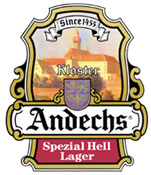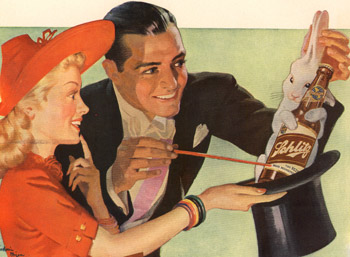The headline on the front page of the Wall Street Journal – “After Making Beer Ever Lighter, Anheuser Faces a New Palate” – nicely summarizes the story.
Alas, the link will work only if you are a subscriber, so you might want to look for today’s WSJ on the news stand.
Briefly, some of the revelations:
– From 1950 to 2004, the amount of malt used to brew a barrel of beer in the U.S. declined by nearly 27%, and the amount of hops in a barrel of beer declined by more than half. Part of that decrease is due to improvements in how brewers extract flavor from hops. Nonetheless, beer’s taste became steadily lighter.
– Over the past 20 years the IBU’s of most American-style lagers has declined from roughly 15-20 IBU’s to fewer than 10 today.
– Doug. Muhleman, A-B’s group vice president for brewing and technology, says the company didn’t set out to make the beers less bitter. He calls the change “creep,” the result of endlessly modifying the beer to allow for changes in ingredients, weather and consumer taste.
– In the early 1980s, August Busch III ordered that freshly brewed cans of Budweiser and Bud Light be cryogenically frozen, using technology typically employed in preserving human tissue. That means A-B employees can sit down and taste how Budweiser might have changed. For the story, Busch was able to taste cans from 1982, 1988, 1993, 1998 and 2003.
The sample cans demonstrate how “creep” works, the story explains. The difference in taste between two beers brewed five years apart is indistinguishable. Yet, the difference between the 1982 beer and the 2003 beer is distinct. “The bones are the same. It is the same structure,” Muhleman said. Overall, however, “the beers have gotten a little less bitter.”
Now, here’s the news:
“In a little-noticed move Anheuser is loath to discuss, the brewer recently added more hops to its beer.”
From the Journal:
Anheuser didn’t talk publicly about it, but the brewer also recently made changes in its brewing process to correct for over-lightening. In August 2003, Mr. Busch met with hops growers in Oregon and Washington and told them that Anheuser was planning to increase the proportion of hops used in its beers, according to several people who were there.
Mr. Busch confirms the account, saying in a written statement: “I told the growers of our desire to use more hops in our brewing for the purpose of delivering more amplitude and hop flavor in Budweiser.”
How abut that?

 Distinguished Brand International is set to begin importing Andechs Spezial Hell Lager this month, although it will be from Canada rather than Germany. DBI explains: “Andechs Spezial Hell is being brewed under direct supervision of the Benedictines and in strict accordance with their purity law called, Reinheitsgebot, at Brick Brewing Company in Waterloo, Ontario. To optimize Andechs special flavor, it will be available in 20 liter kegs (5.28 gallons). The small kegs reduce oxidation, helping to ensure Andechs superior flavor.”
Distinguished Brand International is set to begin importing Andechs Spezial Hell Lager this month, although it will be from Canada rather than Germany. DBI explains: “Andechs Spezial Hell is being brewed under direct supervision of the Benedictines and in strict accordance with their purity law called, Reinheitsgebot, at Brick Brewing Company in Waterloo, Ontario. To optimize Andechs special flavor, it will be available in 20 liter kegs (5.28 gallons). The small kegs reduce oxidation, helping to ensure Andechs superior flavor.” Heineken has just kicked off a national advertising campaign to support its off-premise launch of
Heineken has just kicked off a national advertising campaign to support its off-premise launch of 